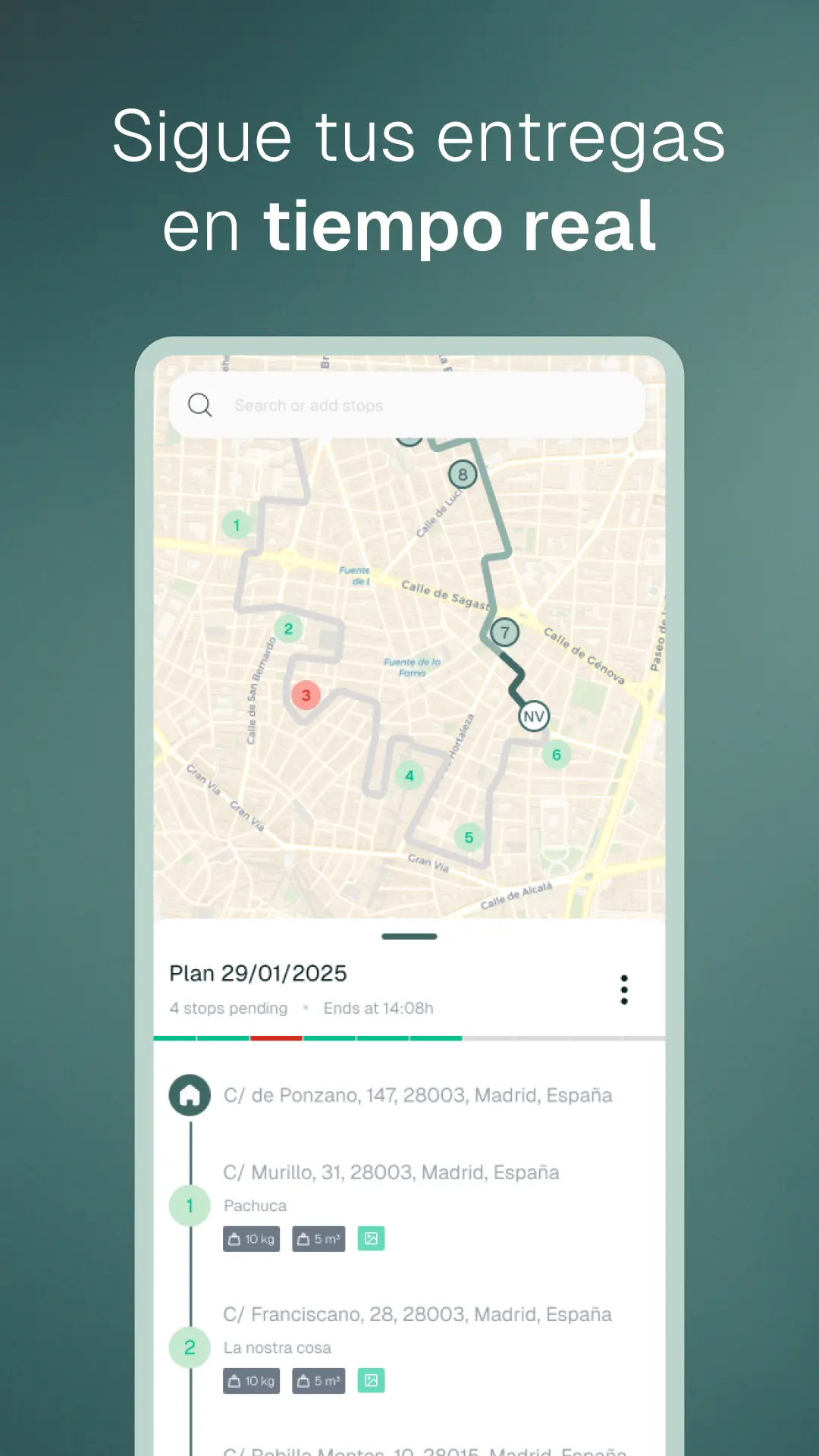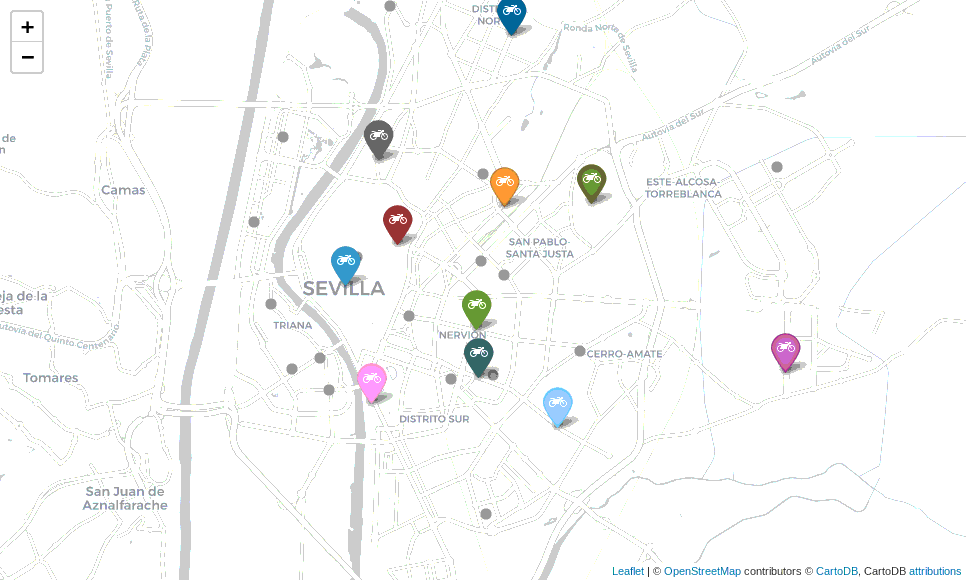Routal blog

Why are more and more delivery people using Routal for Drivers to optimize their working hours?
Imagine this: you get home sooner, you save fuel, you know exactly what time you'll finish and, by the way, you help the planet. It's not science fiction, it's what many delivery people are already achieving thanks to Routal for Drivers, our app designed specifically for those who are behind the wheel every day.
Unlike other tools that rely on planning from a desktop, Routal for Drivers puts all the power of optimization directly in the hands of the delivery person. Literally.
Fast planning, in the palm of your hand
Forget about Excel, last-minute calls or those eternal routes that seem to have no end. With Routal for Drivers, you can upload your stops directly from your mobile phone and optimize them in seconds. It's as easy as selecting your drop off points, pressing a button and starting to drive.
The result: routes up to 30% more efficient. And that shows.
1. Time savings: get home early
Yes, we know. After many hours behind the wheel, all you want is to get home. Intelligent route optimization does just that: reduces driving time, eliminates unnecessary laps and improves the sequence of stops.
Thanks to this, many delivery people are already seeing shorter working hours while still fulfilling all their deliveries. More time for yourself, your family or just to rest.
.webp)
2. Lower fuel consumption: lower costs, more efficiency
Fewer kilometers traveled means less gasoline or diesel consumed. And that, in these times, translates into very tangible savings at the end of the month.
By avoiding unnecessary detours or poorly planned routes, Routal for Drivers helps significantly reduce fuel costs. More efficiency, more money in your pocket.
3. Better forecasts: you know exactly what time you'll finish
The app not only gives you the optimal route, but it also tells you the estimated completion time. Do you have an appointment in the afternoon or do you want to better organize your day? With Routal, you can do this without surprises or unforeseen delays.
La total visibility over your day gives you the control and peace of mind you need to plan better.

4. Lower emissions: better driving also means taking care of the planet
This benefit is enormous and sometimes goes unnoticed. By reducing the distance traveled and driving time, CO2 emissions are also reduced. That means, without changing vehicles or making costly investments, you're doing your part for a cleaner planet.
With each optimized delivery, you're contributing to more sustainable logistics.
Who is Routal for Drivers for?
For autonomous delivery people, small fleets, last-mile teams and any driver who wants to optimize their daily lives without complications. You don't need to be a logistics expert or have access to a computer: everything you need is on your mobile.
Conclusion: Drive Better, Live Better
Life on the road is intense, and any improvement counts. Routal for Drivers allows you to take control of your day, be more efficient and, above all, Get home early. Save time, fuel and stress, while doing your job more sustainably.
Haven't you tried it yet? It's time to start.
.webp)

On-demand delivery is an industry that is growing at a very high speed. New companies appear every day, especially in the food and beverage market and the delivery of fresh products. And the competition is wild. Efficiency is a key metric in the “I want it all and I want it now” era and the most critical part is what happens from when a new order is placed until it is delivered.
Today I want to focus on the problem of sending new orders, that is, how to decide which courier the order should be assigned to when an order enters the system. This is because today shipping is not addressed in a systematic way. Optimizing the dispatch system can minimize delivery time and improve customer satisfaction.
The operating paradigm of companies that deliver on demand can be divided into two different types:
- Deliveries based on a single deposit are those operations focused on a warehouse. This warehouse has several messengers and the programming is done once for an order list; normally grouping orders by zones. Amazon Prime is a good example of this operating paradigm.
- Deliveries based on multiple deposits are those operations that depend on picking up the order in one of the multiple warehouses and delivering it to a customer. In this case, the messengers are scattered around the city and, once a new order arrives, it is assigned through a dispatch process to one of the multiple messengers. Companies such as Uber, Just Eat, Delivero , etc. operate this way.
The problem of the office is solved with greater or lesser success in the first scenario, due to the possibility of linking together a list of deliveries and treating it as a Common traveler problem with some restrictions prior to bundling ( OK, I know that TSP is a really expensive problem, but... come on, it's Amazon ).
On the contrary, in the second scenario it is not so clear that the problem is being optimally addressed. How can a new incoming order be added to a running scenario? There are tons of variables to consider:
- Can the courier make several collections before starting to deliver?
- Can an already assigned order be reassigned to another courier?
- Do all orders have the same priority? ( for example, all orders must be delivered no later than 30 minutes after placing )
- Do orders need to be delivered by a particular vehicle?
- ...

Modeling this scenario can be quite a challenge and that's why SmartMonkey you have been working on this problem for a while. We call our solution Online Programming Optimization Model (OSOM) (Yes, branding isn't one of our strengths 😅, but phonetically it sounds like “incredible” and that's pretty fun). OSOM can model business limitations and find a viable solution to the dispatch problem.
In the simulation below, we have modeled a world where:
- A courier can be assigned several pickups and deliveries at once.
- and the first next service in each message is fixed and cannot be reassigned in subsequent iterations.
The visualization contains twenty iterations of the world divided into Two steps :
1. New incoming services are marked in gray.
2. Services are dynamically assigned to messengers to optimize total delivery time.






.png)


